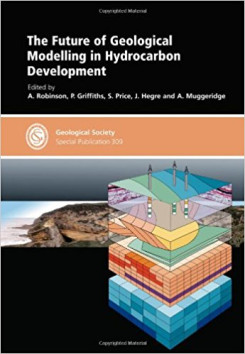The Future of Geological Modelling in Hydrocarbon Development
The 3D geological model is still regarded as one of the newest and most innovative tools for reservoir management purposes. The computer modelling of structures, rock properties and fluid flow in hydrocarbon reservoirs has evolved from a specialist activity to part of the standard desktop toolkit. The application of these techniques has allowed all disciplines of the subsurface team to collaborate in a common workspace. In today's asset teams, the role of the geological model in hydrocarbon development planning is key and will be for some time ahead.
The challenges that face the geologists and engineers will be to provide more seamless interaction between static and dynamic models. This interaction requires the development of conventional and unconventional modelling algorithms and methodologies in order to provide more risk-assessed scenarios, thus enabling geologists and engineers to better understand and capture inherent uncertainties at each aspect of the geological model's life
- Genre: All Books, Geomodeling
Cast & Characters
| 1-4 | The future of geological modelling in hydrocarbon development: introduction |
| 5-38 | Fault seal mapping – incorporating geometric and property uncertainty |
| 39-50 | Realizing complex carbonate facies, diagenetic and fracture properties with standard reservoir modelling software |
| 51-66 | Assessing structural controls on reservoir performance in different stratigraphic |
| 67-74 | Using multiple-point statistics to build geologically realistic reservoir models: the MPS/FDM workflow |
| 75-86 | Reservoir-scale 3D sedimentary modelling: approaches to integrate sedimentology into a reservoir characterization workflow |
| 87-98 | Calibration and validation of reservoir models: the importance of high resolution, quantitative outcrop analogues |
| 99-122 | Modelling of dipping clinoform barriers within deltaic outcrop analogues from the Cretaceous Western Interior Basin, USA |
| 123-134 | Multiscale geological reservoir modelling in practice |
| 135-144 | Flow upscaling in highly heterogeneous reservoirs |
| 145-160 | Scenario-based reservoir modelling:: the need for more determinism and less anchoring |
| 161-180 | Incorporating uncertainty into geological and flow simulation modelling in Chevron:: application to Mafumeira, a pre-development field, Offshore Angola |
| 181-192 | Addressing uncertainty and remaining potential in a mature field. A case study from the Tertiary of Lake Maracaibo, Venezuela |
| 193-204 | A method for quantifying geological uncertainties in assessing remaining oil targets:: a case study from the Glitne Field, North Sea |
| 205-220 | The Schiehallion Field: lessons learned modelling a complex deepwater turbidite |

